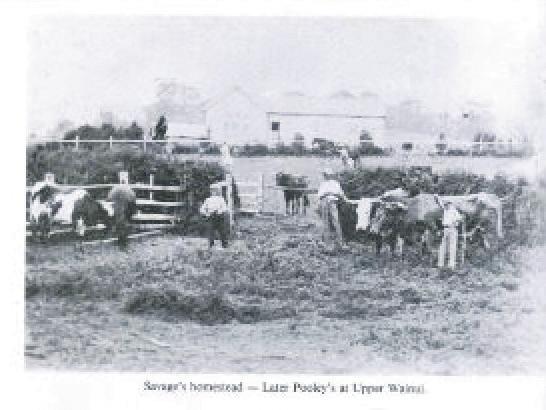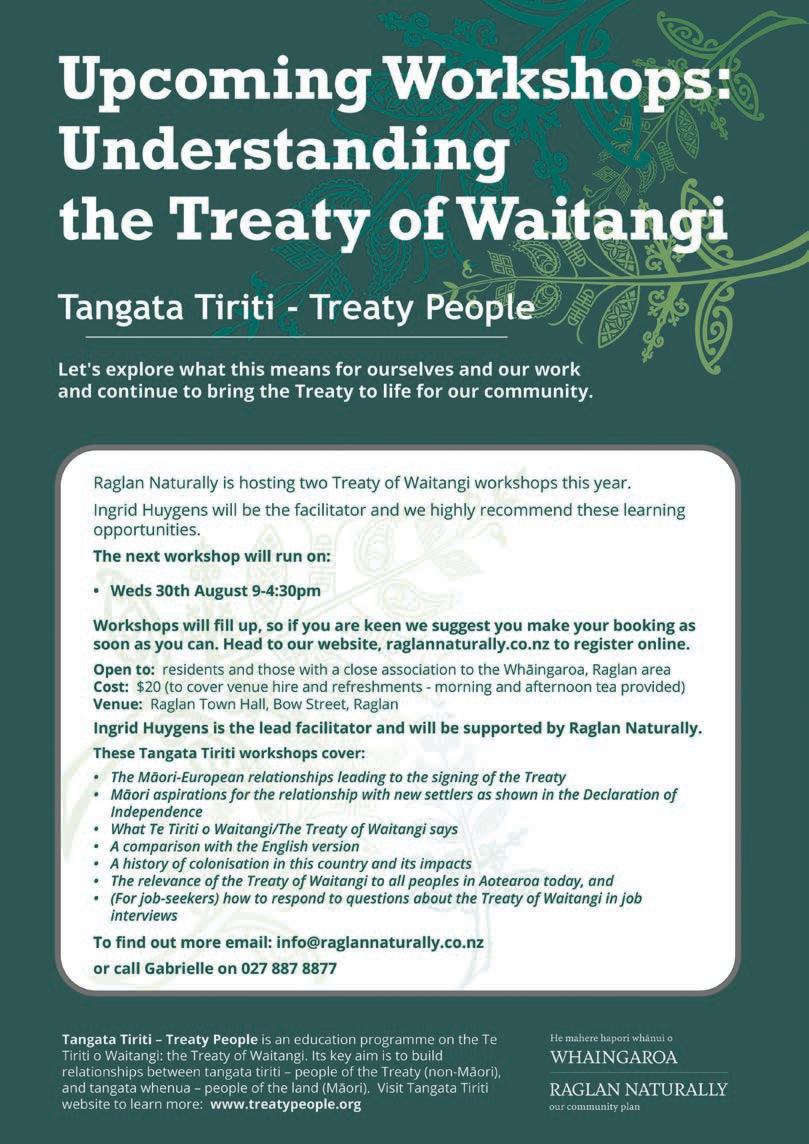
2 minute read
Behind the headstones: The Savage Family
from Raglan Museum
Further delving into “The Stories Behind the Headstones,” Elizabeth Amoore’s book continues to bring to light tales of the many good, strong people who formed the backbone of the settler community in Raglan.
Advertisement
Not least of these was one Charles Edwin Savage, born in 1827 in Hampshire, England. He married Elizabeth Vercoe, one of the earliest settlers in Taranaki, having arrived there with her parents in 1842. They were married at New Plymouth in 1855.

Charles came to Te Uku in 1856, to manage John Gilmour’s farm, “Spring Grove”. The family moved to Auckland during the Māori Wars, and returned to Raglan in the 1870s, when they took up land under the Home Settlement Scheme. He later bought 150 acres at Upper Wainui, as well as another block at the gorge. Charles was a cabinet maker by trade and built their home of kahikatea.
Location Of Defibrillators In Raglan
Defibrillators can save lives in the event of an accident or medical emergency. Here is where they are located in Raglan.
24 HOURS:
St John Raglan (11 Wainui Road)
St Peter's Anglican Chuch Hall (44 Bow Street)
Raglan Club (22 Bow Street)
Raglan Holiday Park (61 Marine Parade)
The Institute of Awesome (5B Whaanga Road)
Raglan Surf Life Saving Club (Ngarunui Beach) outside wall of the club (downstairs) that public can access 24/7 when they phone 111 for the lock combination.
WORK HOURS:
Raglan Gym (32 Bow Street)
Raglan Medical Centre (9 Wallis Street)
Raglan Police (3 Wi Neera Street)

Xtreme Zero Waste (186 Te Hutewai Road)
Raglan Surf Life Saving Club (Ngarunui Beach)
Raglan Coastguard (Raglan Wharf)
Camp Raglan (578 Wainui Road) e-Coast Marine Consulting (18 Calvert Road)
Poihākena Marae - Yellow Cabinet (222 Wainui Road)
The Hut Rangitahi

This info can be found on https://aedlocations.co.nz/ or the AED app.
You can download it for free on your phone.
Charles was a very educated man, a Justice of the Peace, a lay reader in the Church of England, a keen student of Charles Dickens’ writings, as well as an actor in the local amateur productions. He also loved nature, both animate and inanimate. He was not lacking in a sense of humour and named his farm animals after Dickens characters. He taught several tuis to talk and would amuse visitors by carrying on a conversation with them!
Charles and Elizabeth had five childrenEliza, Frederick, Alfred, Bessie and Kate. Sadly, the two teenage boys disappeared from Raglan and no trace of them was ever found despite many appeals being made in the country’s papers, begging them to “write to your aged sorrowing parents at Raglan, or sisters, Bessie and Kate”.
Charles took a keen interest in all matters pertaining to the good of the district and the welfare of others.
It is evident, when one reads Elizabeth’s obituary in the Waikato Argus on 17 September 1898, that Elizabeth was an equally caring and community minded person. It states that “the deceased lady was of a kind disposition, sympathetic and ever ready as a kind neighbour to render help or give assistance to those of her neighbours who stood in need of it… many have partaken of her hospitality at her beautiful home”. She had a good send off, attended by settlers from all over the district, who wished to pay their respects to “one loved and esteemed”.
One of Charles and Elizabeth’s daughters, Bessie, didn’t marry and remained at Twyford, Karioi, with her parents, caring for Charles until she died in 1903 at the age of 38, of a “long and painful illness”.
Charles followed her shortly thereafter, dying of influenza in 1904.
Catherine, Charles and Bessie were buried in the Raglan cemetery.
Another daughter, Kate, and her husband, Frank Rastrick, bought the Savage farm. The oldest daughter, Eliza, married Mr Harsant, and then John Roffey. Neither of these 2 women is buried in Raglan Cemetery.










